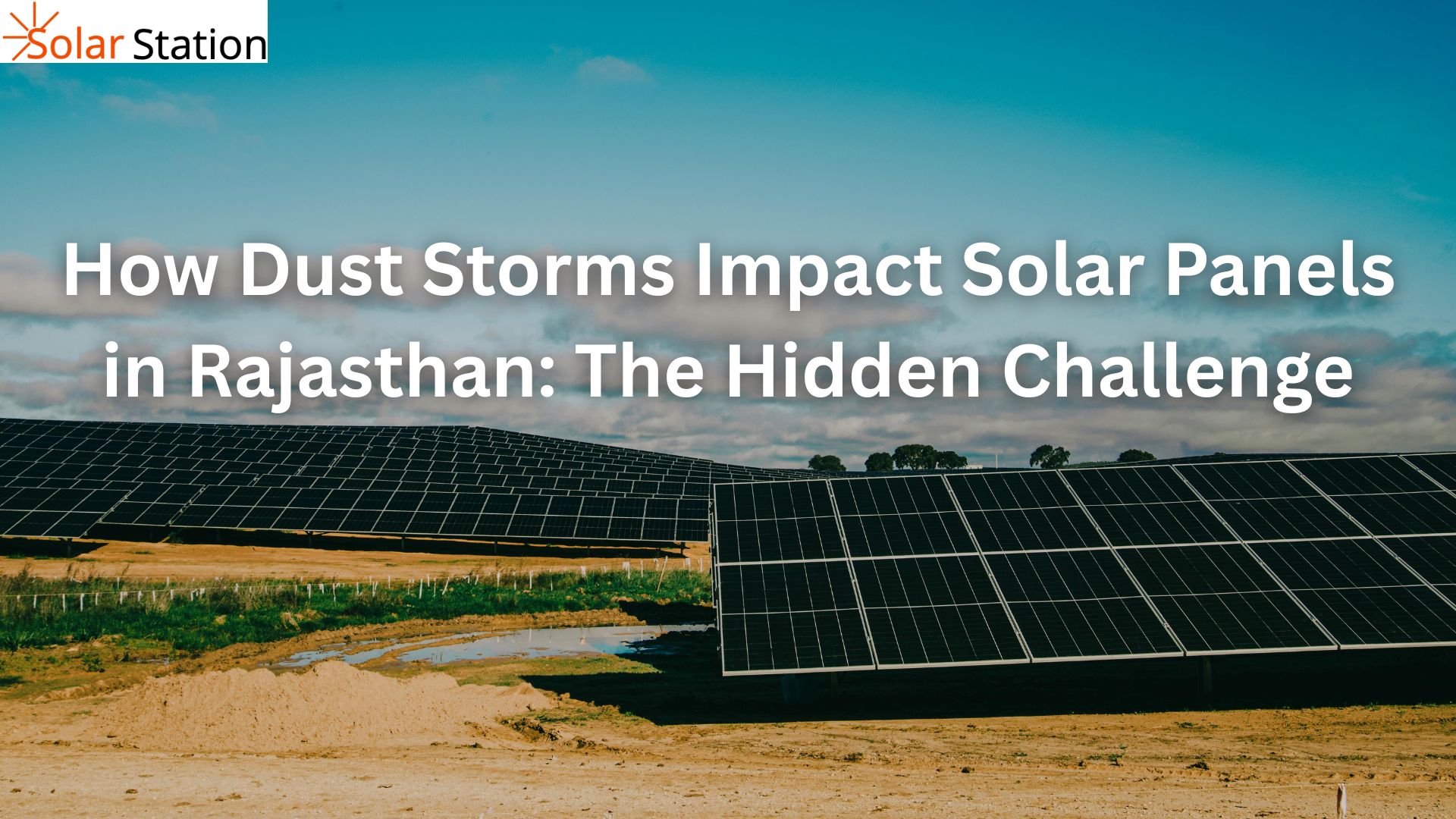
How Dust Storms Impact Solar Panels in Rajasthan: The Hidden Challenge
Date: 2025-08-28
Rajasthan, India’s solar hub, faces a hidden challenge—dust storms. These storms block sunlight, damage panels, and cut energy output. Learn the science behind performance loss and practical solutions like frequent cleaning, anti-soiling coatings, tilt adjustments, and smart monitoring to keep solar energy efficient and sustainable.
Rajasthan has become the solar hub of India due to its vast deserts and high levels of solar radiation. With over 325 sunny days each year, the state offers an ideal environment for solar power generation. Massive projects like the Bhadla Solar Park and the growth of rooftop installations demonstrate Rajasthan's rising solar presence.
However, one natural factor that is often overlooked in discussions about solar power is the dust storm. Locally known as "aandhi," these storms sweep across the state, especially during the pre-monsoon months, bringing fine sand and dust particles. While they are a part of Rajasthan's climate, their impact on solar energy systems is significant.
This article examines how dust storms affect solar panels, explains the science behind performance loss, and offers practical ways to manage the issue.
Why Dust Storms Are Common in Rajasthan
Geographical Location: The Thar Desert covers a large part of western Rajasthan. Loose sandy soil and dry conditions make the area prone to dust uplift.
Seasonal Winds: From April to June, hot winds, known locally as loo, often combine with weather disturbances, creating powerful dust storms.
Low Vegetation Cover: Sparse greenery means there is little to keep the soil intact, making dust storms stronger and more frequent.
Dust storms in Rajasthan are not random; they are seasonal and predictable. This makes their impact on solar systems a constant concern.
How Dust Affects Solar Panels
1. Blocking Sunlight
Solar panels need direct sunlight for electricity generation. Dust layers that form after a storm act as a barrier, reducing the light reaching photovoltaic (PV) cells. Even a thin layer can cause a 5 to 10% drop in efficiency. After severe dust storms, the loss in efficiency can reach 40 to 60% until the panels are cleaned.
2. Hotspot Formation
Dust does not settle evenly on panels. Some areas may be covered more heavily than others, leading to uneven heating. This creates hotspots—sections of the panel that overheat. Hotspots decrease output and can permanently damage the cells.
3. Surface Damage
Storms carry sand particles at high speeds. These particles hit the glass surface of the panels, causing micro-scratches. Over time, these scratches reduce transparency, making the panels less effective at capturing sunlight.
4. Higher Cleaning Needs
Under normal conditions, solar panels may require cleaning every two weeks. During Rajasthan's dust storm season, cleaning may be needed multiple times a week. For large solar farms, this increases operational costs and water usage.
5. Impact on Energy Supply
When dust storms hit large solar parks, the power generated for the state grid can drop suddenly. This creates pressure on electricity supply, leading to a reliance on backup power from conventional sources.
Data on Efficiency Loss
Studies conducted in Rajasthan and other similar desert regions show:
- Daily dust accumulation without storms can reduce efficiency by 0.2 to 0.3% per day.
- After major dust storms, panels can lose up to 60% of output until cleaned.
- Annually, dust-related losses can accumulate to 10 to 15% of total solar production if maintenance is irregular.
This means that even in one of the sunniest states in India, solar energy production can be significantly affected by dust.
Solutions to Manage Dust Storm Challenges
Since dust storms are a natural occurrence, the goal is to minimize their impact on solar systems, not to stop them.
1. Frequent Cleaning
Manual cleaning with soft brushes and water is common but may not be practical for large farms.
Automated cleaning robots are being developed to reduce labor and water use.
Water-free methods such as air blowers and electrostatic cleaning are gaining interest in desert areas where water is scarce.
2. Panel Tilt Adjustments
Panels installed at slightly higher tilt angles allow dust to slide off more easily. This reduces dust accumulation, although it cannot completely prevent it during storms.
3. Anti-Soiling Coatings
Research is ongoing on applying dust-repellent nano-coatings on panel glass. These coatings reduce the adherence of dust particles, making cleaning easier and less frequent.
4. Monitoring Systems
Smart monitoring tools can detect sudden drops in efficiency. This helps operators determine when cleaning is necessary rather than sticking to a fixed schedule.
5. Designing for Local Climate
When planning solar projects in Rajasthan, it is important to consider the frequency of dust storms and maintenance needs. Using durable, scratch-resistant glass and designing centralized cleaning systems for large solar parks are practical steps.
Broader Implications
Dust storms highlight the importance of local environmental conditions in renewable energy planning. While Rajasthan has unmatched solar potential, ignoring the impact of dust could:
- Reduce the return on investment for solar projects.
- Increase operational and maintenance costs.
- Slow the growth of rooftop adoption if households find upkeep difficult.
For policymakers, researchers, and solar companies, addressing dust storm challenges is essential for ensuring that Rajasthan's solar growth remains sustainable.
Conclusion
Dust storms are an unavoidable part of Rajasthan’s desert climate. While they may last only a few hours, their effect on solar panels can persist for days through reduced efficiency and increased cleaning requirements.
Understanding this hidden issue is vital for both large-scale solar parks and individual rooftop users. With advances in cleaning technology, anti-dust coatings, and smarter design practices, Rajasthan can continue to lead India’s solar movement while adapting to its unique climate conditions.
By considering dust management as a key part of solar planning rather than an afterthought, the state can ensure it makes the most of its richest resource—the sun.











